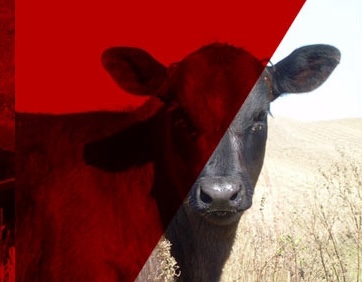Manganese (Mn) is an essential trace mineral that is especially critical in the development of the calf. Diets deficient in Mn fed to pregnant cows have been shown to cause dwarfism and joint deformities. Preventing Mn deficiency starts with assessment of Mn in available feedstuffs; grass pasture is often sufficient in Mn, corn silage often has relatively low Mn and all silages can have high iron (Fe) content that decreases Mn availability from the diet.
Manganese and the Cowherd
The cow’s requirements for Mn is 40 ppm in the diet (DM basis).
Observations from industry and research trials highlight that heifers and cows fed Mn-deficient diets during pregnancy, especially those incorporating silage, can lead to skeletal deformities and joint enlargement and/or joint laxity in newborn calves. Joint laxity can cause calves to “knuckle” over, making it hard for them to stand.
In most grazing scenarios, Mn requirements are met entirely through forages, but producers can supplement part of the requirement as a precautionary measure. Supplementing 25% of the Mn requirement, or 10 ppm to the total diet, is recommended (1300 ppm in 4 oz intake free choice mineral).
Silage and Mn Absorption
Silage-based diets are a concern regarding Mn absorption. During harvest and storage, silages can be contaminated with dirt, and thus, introducing additional Fe into the feedstuff. Unlike hay or grazing situations, the acidic environment during ensiling makes Fe in the dirt available for absorption, decreasing the Mn available from the diet. Thus, more Mn may be needed in these scenarios to overcome high Fe content. Soil contamination can be high when earthen bunkers or dirt pads are used, increasing the risk of high Fe interfering with Mn absorption.
Testing silages for not only Mn, but also Fe, is the first line of defense for Mn nutrition. Data collected from Nebraska feedstuffs highlighted the need for additional Mn in silage-based diets. Of submitted corn silage samples, nearly 1/3 had greater than 200 ppm Fe, representing some antagonism of Mn absorption. These samples also had less than the cow requirement for Mn, analyzing at 35 ppm Mn, on average. In scenarios where Fe exceeds 200 ppm, it is recommended that 60-75% of the Mn requirement is supplemented (3000-4000 ppm in 4 oz intake free choice mineral).
Additionally, small grains chopped for silage are prone to limited Mn absorption due to high Fe. While samples of small grain silages had an average Mn concentration of 86 ppm, the average Fe concentration was 725 ppm. Seventy-five percent of submitted samples contained more than 200 ppm Fe and nearly 40% had more than 500 ppm Fe. This large increase in Fe may be due to the need to windrow and wilting the forage before chopping creating contact with soil and soil contamination during chopping. To overcome high antagonistic pressure at or above 500 ppm Fe, it is suggested to supply close to the Mn requirement (4000 ppm in 4 oz intake free choice mineral).
Conclusion
Mn is crucial for growth, reproduction, and several metabolic processes in cattle. While pastures generally provide sufficient Mn, diets relying on silage may require supplementation, especially if dirt contamination is an issue. Meeting the Mn requirement supports fetal calf development, but exceeding the requirement does not benefit performance. Overall, Mn supplementation should account for Mn content in feedstuffs and interference from Fe in silage-based diets.
For a more comprehensive review of mineral and vitamin supplementation strategies for the cowherd, visit: Formulation Considerations for Mineral and Vitamin Supplements for Beef Cows

